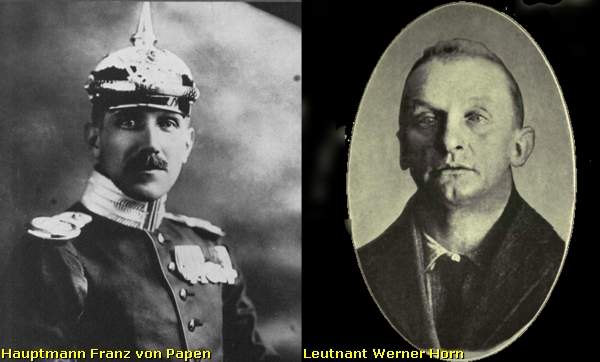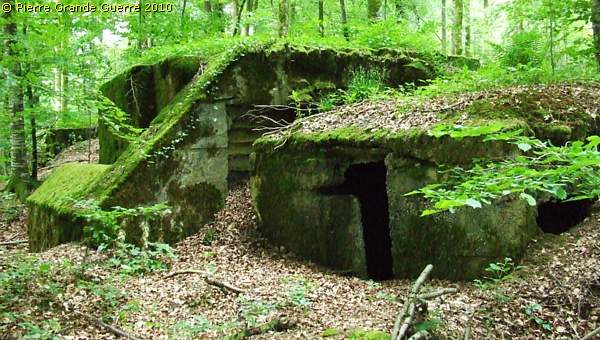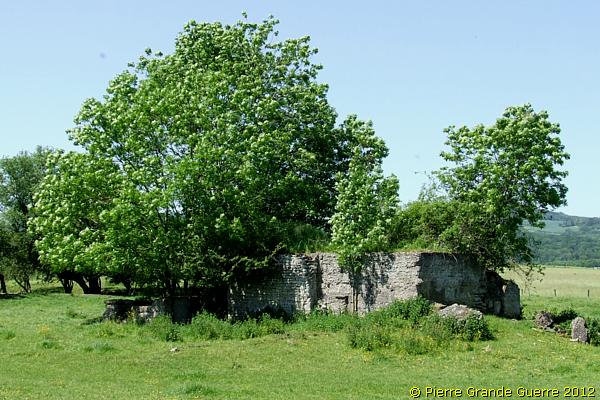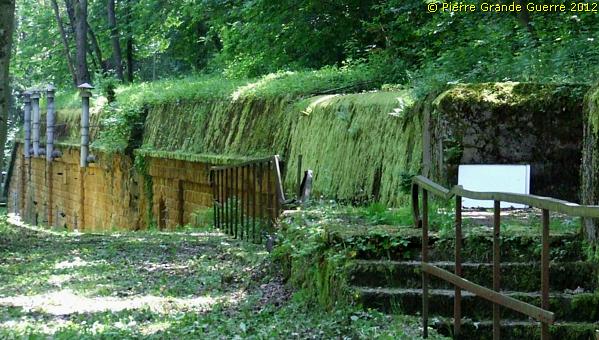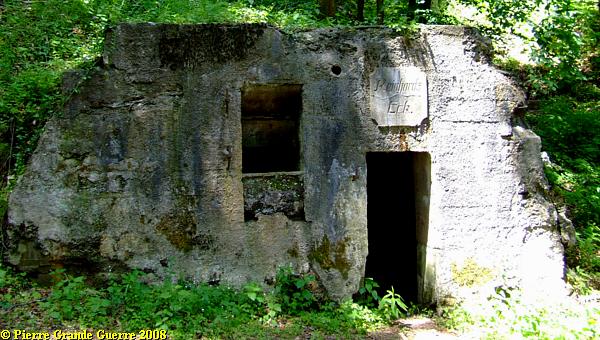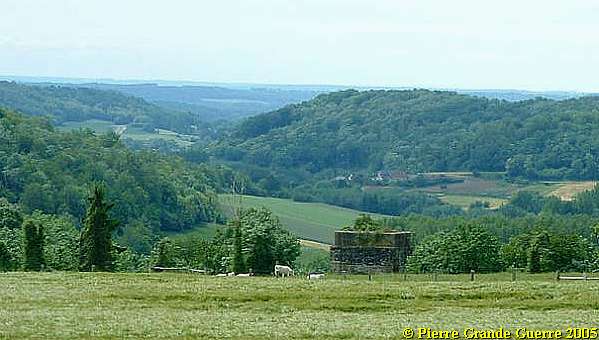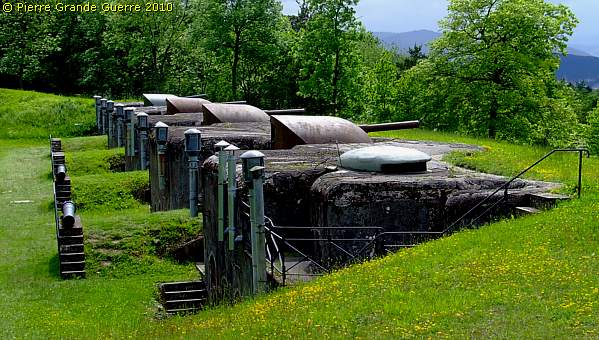SOMME BRITISH Sector - Thiepval Memorial - Dorsets Memorial - Mouquet Farm
Years of visit: 2005, 2007, 2008, 2010, 2011

A photo report of several visits to the Thiepval Memorial, the Dorsets Memorial and Mouquet Farm. In 1916 the Württembergische 26. Reserve Division defended this front sector.

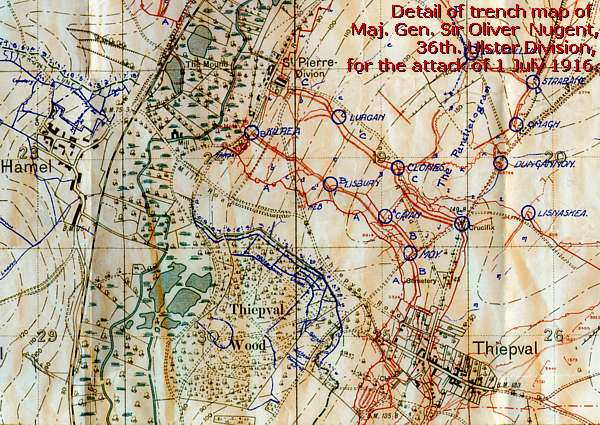
From every hill in the Somme Region you can see the Thiepval Memorial as an impressive landmark.

Thiepval Wood. Right; Thiepval village and the Memorial.
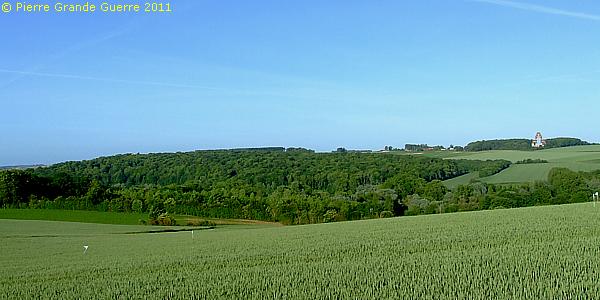


As you approach the hamlet of Thiepval , ...

... you can detect the Memorial on the former location of the "Château de Thiepval".
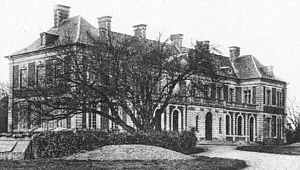
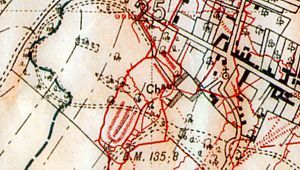
Before we visit the Memorial, we approach Thiepval village again from the west, from the Mill Road.
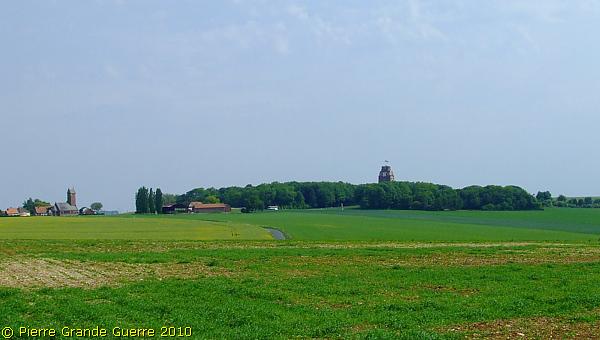
The small village and the location of the Memorial used to be the German Leipzig Salient.
The Württembergische 26. Reserve Division
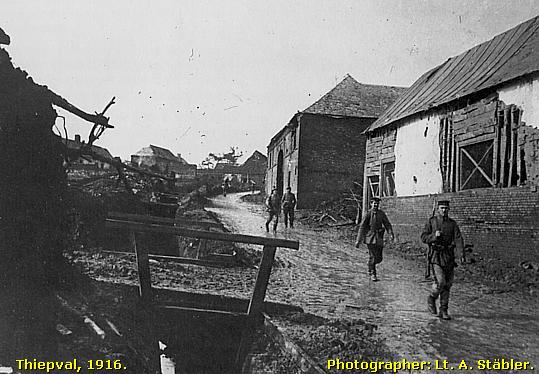
After fighting at the Grendelbruch in the Alsace in early August 1914, the Württembergische 26. Reserve Division arrived in the front sector around Thiepval on 27 September 1914. The Division was redeployed from Bapaume, and it was immediately involved in heavy battles with the French troops. The 26th R.D. drove the French back at Albert. The trench line consolidated at the end of September 1914 on a line running roughly from Beaumont via Thiepval to Contalmaison.
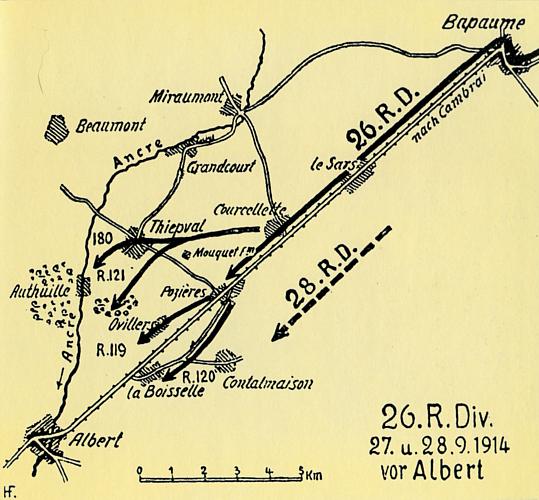
The Württembergische 26. Reserve Division consisted of the 51. Reserve-Infanterie-Brigade, composed by the I.R. 180. and R.I.R. 121, and the 52. Reserve-Infanterie-Brigade, composed by R.I.R. 119, R.I.R. 99, the Württembergische Reserve Dragoner Regiment, Res.-Feldart.-Regt. 26, R.F.A.R 27, 4 companies of Pionier-Bataillon Nr. 13, Württ. Reserve-Sanitäts-Komp., and reserve train units and communication units.

From 28 September 1914 until 7 October 1916 the 26 R.D. was based along a front line running roughly from Beaumont via Thiepval to la Boisselle, later to Flers .
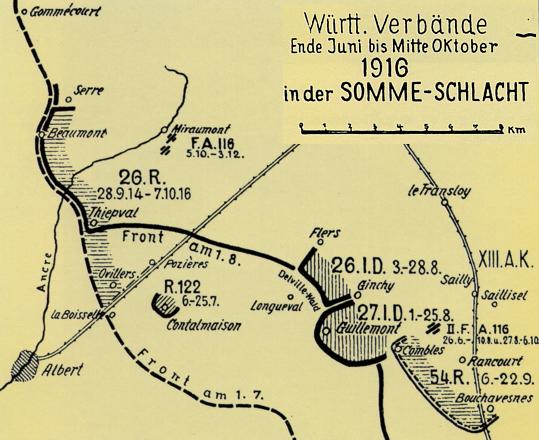
The Division’s artillery support of F.A.R 116, the Regimental staff of 26 R.F.A.R., and the Staff of General von Soden set up Divisional Headquarters at Miraumont .

Facing for a long period the British 4th Army, General von Soden was fully aware of the British build-up of
troops. Von Soden was relying on the
fact that most of his men were veterans of trench warfare.
Leutnant Armin Stäbler
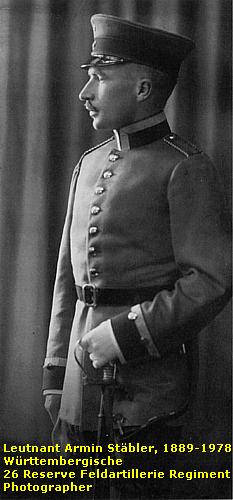
In this intermezzo about the Württembergische 26th Reserve Division these remarkable period photos are made by Leutnant Armin Stäbler of the Württembergische 26 Reserve Feldartillerie Regiment (26 R.F.A.R., or more short, 26 R.A.R.). As a staff officer Lt. Stäbler was not often involved in combat action. Following his regiment, wherever it was going, Alsace, Somme, Cambrai, St. Quentin, and Ypres, in his spare time Leutnant Stäbler created a unique photo collection, a documentation of the daily life of soldiers and officers of the 26th R.D. along and behind the frontlines.

Soden's Division and some Bavarian Regiments, like B.R.I.R. 6 and B.R.I.R. 8, held the Thiepval Plateau, which formed a key strongpoint in the German defenses .

This
high
ground
dominated
the
entire
,
northern
sector of
the
Somme front. It
included
the
ruins
of
the
village
of
Thiepval
and
a
stronghold
west of
it
,
called
by
the
British
the
Schwaben
Redoubt
,
and
by
the
Germans
the
Hansa
Stellung
.
Von Soden’s troops had turned the place into a fortress.

I consider the area around Thiepval also as the centrepoint of the Battle of the Somme.
In Thiepval we found some memorials on the walls of the church.
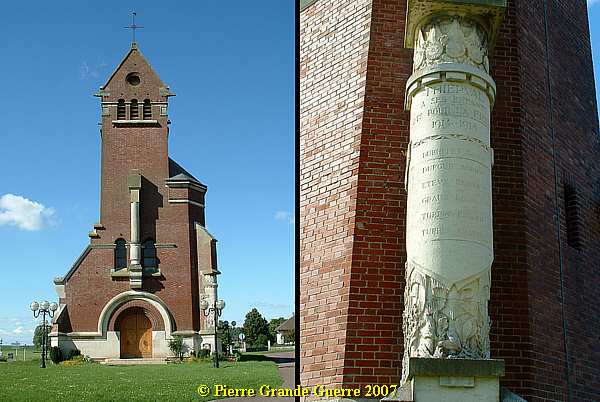
This plaque commemorates Sir Adrian Carton de Wiart, who won his Victoria Cross at La Boisselle, commanding the 8th Gloucesters on 2 and 3 July 1916.
Lieutenant-Colonel
Carton de Wiart
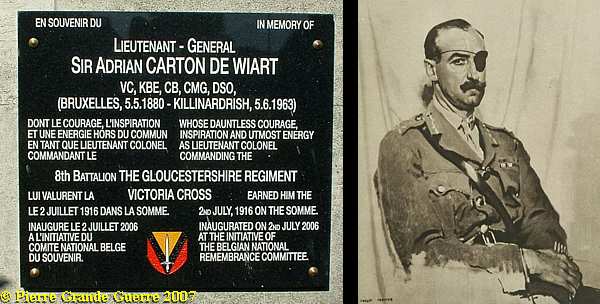
On 2
July
/3
July
1916, at nearby La Boisselle,
Lieutenant-Colonel
Carton de
Wiart's
dauntless
courage,
and
inspiration
averted
what
could
have been a
serious
reverse.
He
displayed
the
utmost
energy in
forcing
the
attack home
and
,
after
three
other
battalion
commanders
had
become
casualties
, he
controlled
their
commands
and
made
sure
that
the
ground
was held at
all
costs
. In
organizing
the
positions
to
be
held, he
exposed
himself
fearlessly
to
enemy
fire
.
Thiepval
Memorial
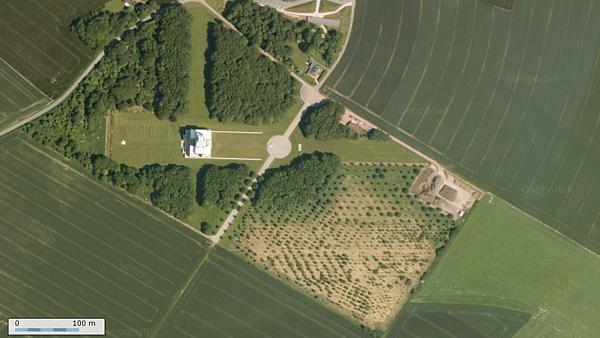
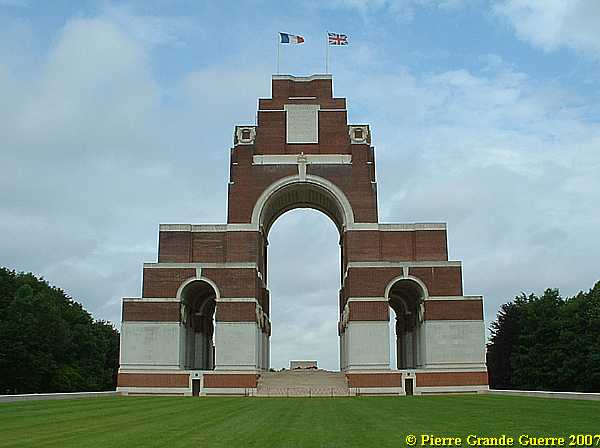
Centrepoint of the Battlefield, the Thiepval Memorial commemorates over 72,000 men, ...
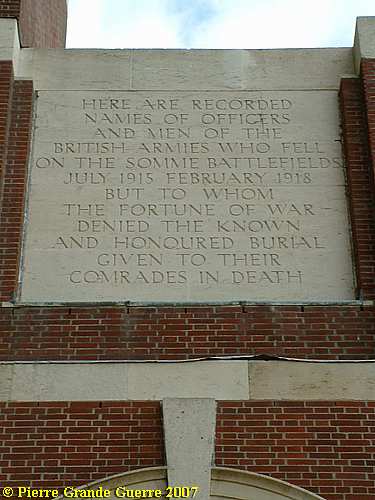
... who have no known grave, and who fell on the Somme between July 1915 and February 1918.
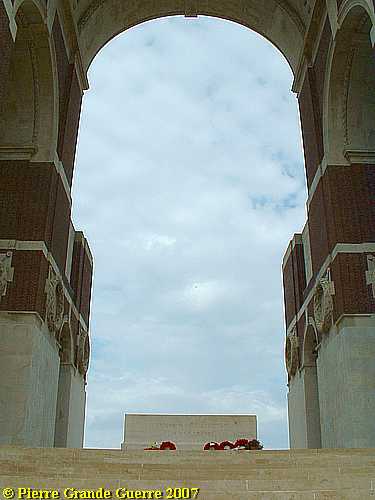
Behind the Memorial is an Anglo French Cemetery , overlooking Thiepval Wood on the horizon.
As a symbol of their bonds as Allies , the French and the English buried 300 soldiers of each nation here.

The Thiepval Memorial, the Memorial to the Missing of the Somme, bears the names of 73,367 officers and men of the United Kingdom and South African forces who died in the Somme sector before 20 March 1918, and whose graves are not known. In the winter of 1931-32, it was decided that a small mixed cemetery be made at the memorial's foot to represent the loss of both the French and Commonwealth nations. Of the 300 Commonwealth burials in the cemetery, 239 are unidentified. The bodies were found in December 1931 and January-March 1932, some as far north as Loos and as far south as Le Quesnel, but the majority came from the Somme battlefields of July-November 1916. Of the 300 French dead, 253 are unidentified.
Source
: Commonwealth War Graves Commission
Thiepval, 1 July 1916, the British infantry attacks

After the bombardment and the detonation of 17 mines, at 7.30 AM, the British infantry troops had to go over the top to attack the 16 German Divisions under General Prinz Eitel Friedrich von Preussen .
In the north near Gommecourt General Allenby’s 3rd Army attacked the German Kern Redoubt with a bloody diversionary attack.
General Gough’s 3 Cavalry Divisions were kept in reserve to exploit successes .
General
Rawlinson’s
4th
Army
attacked
over a 30 km. front
with
15
divisions
near
Hébuterne
,
south
of
Gommecourt
,
near
Serre,
Beaumont Hamel,
Thiepval
,
Ovillers
,
La Boiselle,
Fricourt
,
Mametz
,
and
Montauban
in
the
south
east
.
In
the
morning
60,000
British men went over
the
top, in
the
afternoon
again
another
40,000 men.
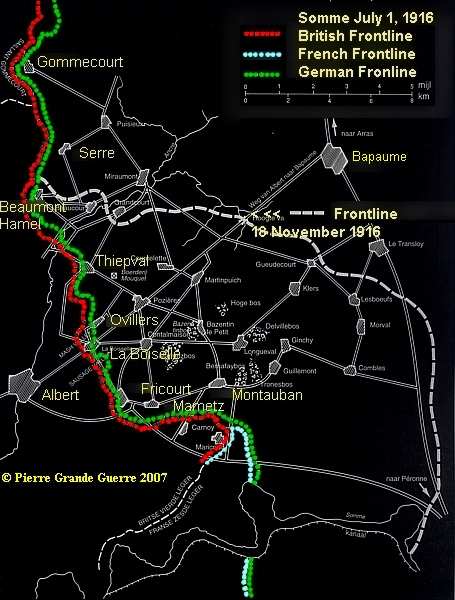
The French 20th Army Corps with its 39th Division, interconnected with the British, north of the river Somme, was successful in reaching Curlu.
South of the Somme General Fayolle’s 6th Army, reinforced with the 35th Division and the 1st Colonial Army Corps, reached all it’s goals for the first day by conquering the villages of Dompierre and Fay.
On this spot, near the Obelisque for the 18th Division, used to be the tip of the Leipzig Salient.
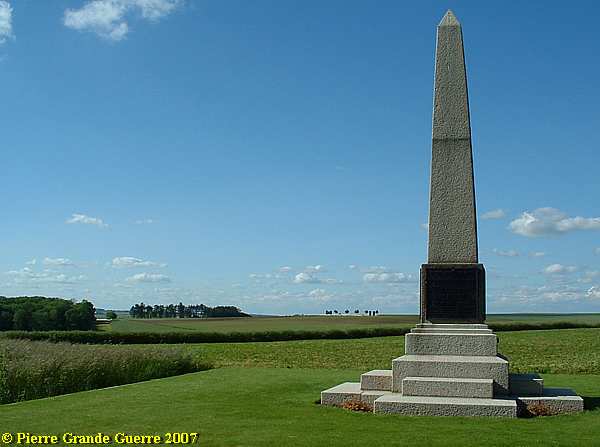
The 18th Division succeeded to capture Thiepval and its surroundings , 3 months later, on 30 September 1916.

The Leipzig Salient

To give you an idea of the Leipzig Salient, which these observers saw in 1916, two British army panorama pictures of the maze of trenches, barbed wire, dugouts, bunkers, and machine gun posts.

These pictures (resp. left and right) had been made from la Boisselle northward to Thiepval .
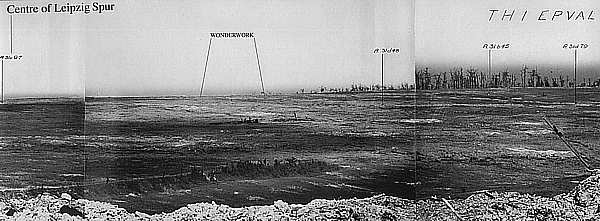
The Dorsets Memorial
| In 2011 we went southward , in birdsflight some 1.500 m away from the Leipzig Salient and the Thiepval Memorial, to visit the new memorial near Authuille and Thiepval , inaugurated at 7 May 2011, dedicated to the Dorsetshire Regiment . |
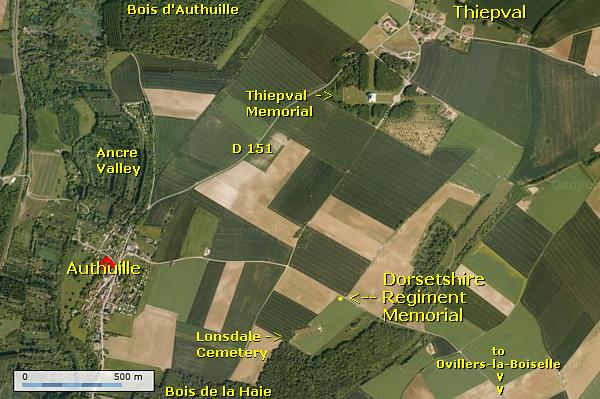
In front of the footpath to Lonsdale Cemetery , opposite the Thiepval Memorial, ...
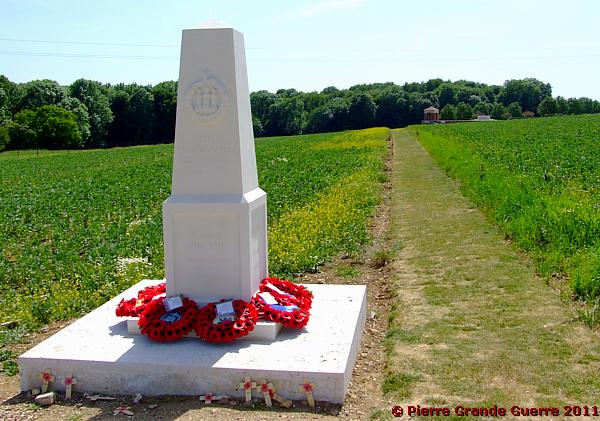
... the Dorsets Memorial is standing on the jump-off lines of the Dorsets.
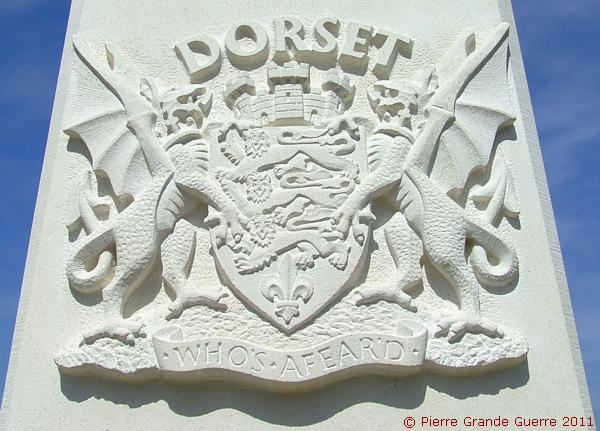
On 1 July 1916, the first day of the Battle of the Somme, the 32nd Division , which included the 1st Dorsets and the 11th Lonsdale Battalion of the Border Regt. attacked the German line at this point and stormed the Leipzig Salient, but were compelled to retire later in the day.

The four sides of the obelisque showing all Great War Battles , in which the Dorsets participated.

View northward into the direction of the Leipzig Salient.
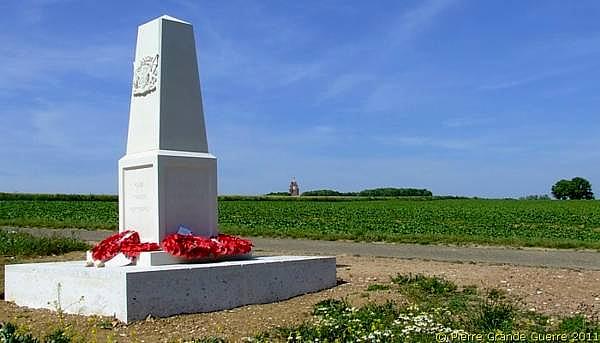
We return to the eastern outskirts of the village of Thiepval to Mouquet Farm .

View from the Thiepval Memorial to the east in the direction of Mouquet Farm.

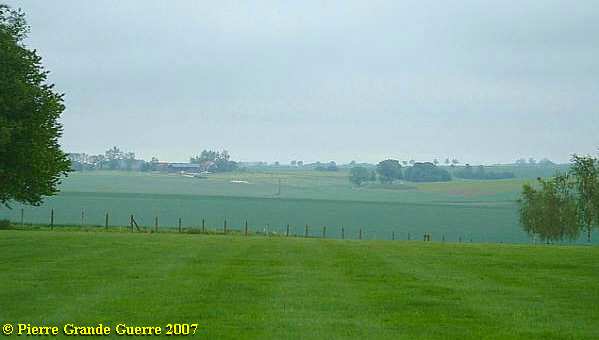
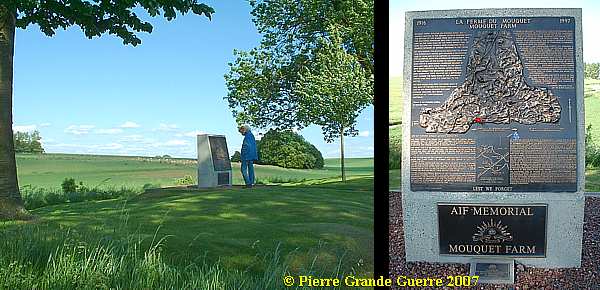
The shattered farmhouse was located to the left of the farm road on the crest. View north-eastward from the road from Thiepval to Pozières, the D 73.
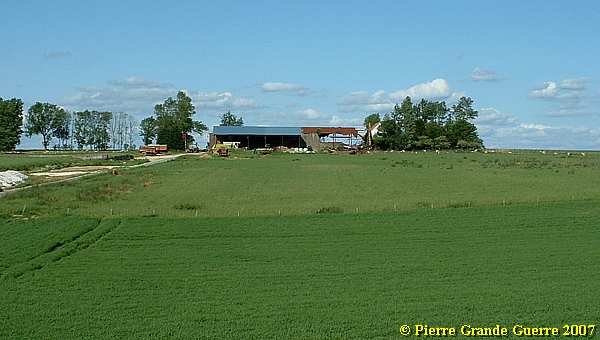
Wartime Mouquet Farm

The wartime Mouquet Farm was located at the northern side of the track to the farm.
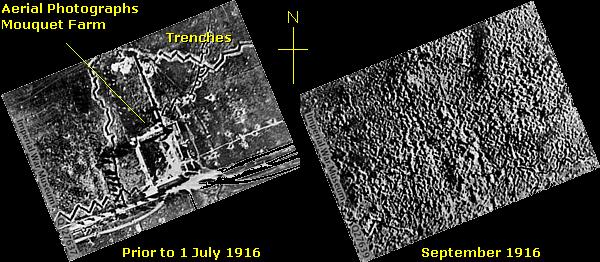
Mouquet Farm was a central bastion in the second line of the German defense system, during the Battle of the Somme from July to October 1916.
It’s deep cellars and tunnels were connected to
a complex network of German trenches in the fields.
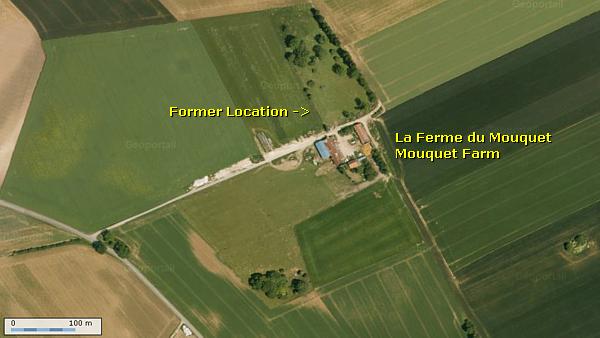
On 5 August 1916 the Australians were first to attack this stronghold, having just incurred a devastating loss of 17,000 men in the capture of Pozières, only 1 km. away.
After a month and 6,500 casualties, the Australians were relieved by the Canadians.
On 27 September, Mouquet Farm fell to the British.
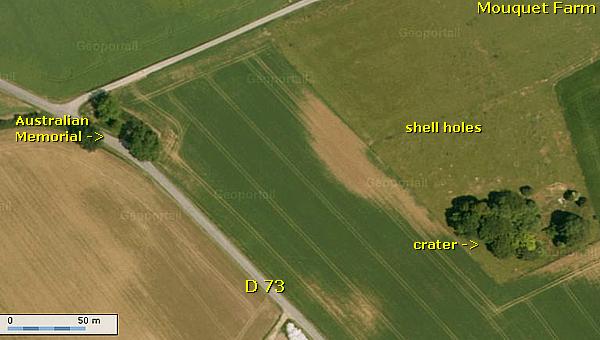


Under the trees right there is still a huge mine crater , the field left is covered with shell holes.
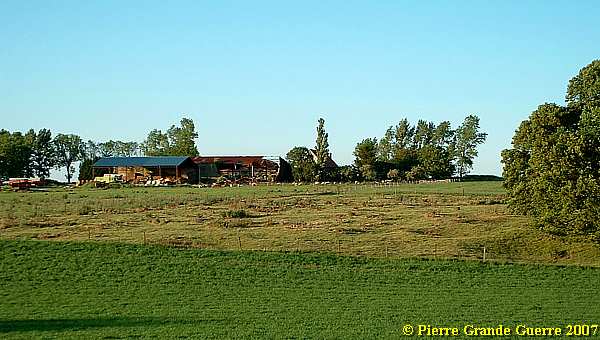
This farmer does not even allow to let his sheep enter this shell hole covered field!

View from Mouquet Farm Road to the Thiepval Memorial, and right to the tower of the church.
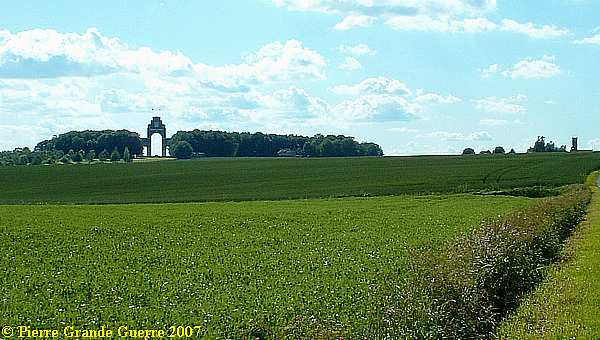
We go back to what happened at the first day of the battle , ...
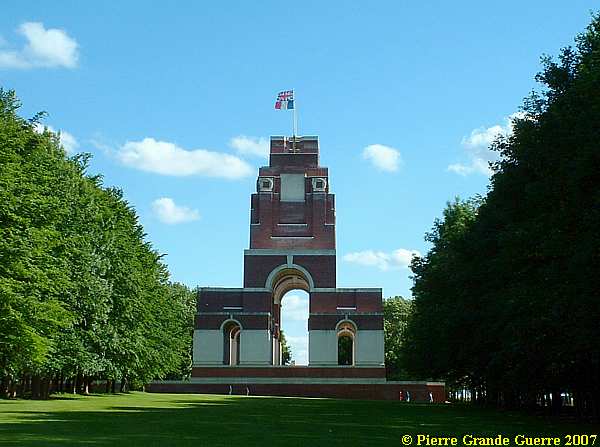
... the 1st. of July , at the nearby Thiepval Wood.

Continue to the next chapter : " Thiepval Wood - Ulster Tower "
